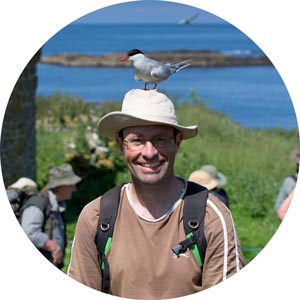Stand and stare
David Chapman explains how patience and timing are the keys to taking striking landscape photographs
 The pillow shapes of the heather are emphasised by the low sun at Levant, Cornwall
The pillow shapes of the heather are emphasised by the low sun at Levant, Cornwall
I am often asked what is the longest I have waited to take a photograph of a wild animal, but I have never been asked the same question in relation to a landscape photograph. The two might seem incomparable – animals move, but landscapes don’t – so what is there to wait for, other than, maybe, the walkers to move farther along the path or the big white motorhome to roll out of the scene?
It should just be a matter of strolling up, finding the best composition and pressing the shutter. However, we all know that it isn’t quite so simple. So what is it that makes one photo of a particular view so much better than another?
The answer to this question revolves around one main variable: light. Composition is important in photography, but understanding light and how it plays on the landscape is critical to creating a great picture.
Imagine a high vantage point looking out over a series of rolling hills. The hills will be clearly distinguishable to the eye, but in camera the top of one might merge into the next, especially when the sun is high overhead or if there isn’t any sun at all. There are times when scattered clouds cast shadows, which help to separate the various parts of the landscape, providing a more three-dimensional appearance, but these moments are ephemeral and unpredictable.
We can be sure that as the sun sinks lower in the sky it will cast longer shadows. The sunny peak of one hill might be set against the shadowy depths of the slope behind, creating a glorious pattern of light and shade.
The stones in stone circles, the bank at the edge of a path, the lone tree on the hillside, the mounds of thrift on the cliff top, the boulders on the beach, even snow on the ground – they all have their time to shine, their shadows to cast and a texture to reveal. Every view is affected by the angle and nature of the light. As photographers we either ‘snap’ the view as we are passing by or we wait and watch.
 A short walk from Hawes Club Campsite leads to this view of Wensleydale from Burtersett
A short walk from Hawes Club Campsite leads to this view of Wensleydale from Burtersett
The same people who ask me how long I wait for photos often go on to tell me that I must be very patient. I would argue that, in a world where we have fast food, take away coffee, drive-throughs, same-day deliveries and the immediacy of social media, it is vital that we find opportunities to slow things down.
Yes, landscape photography can be time-consuming but, rather than demanding patience, it should be regarded as an opportunity to relax. What could be better for our mindfulness and well-being than to sit and watch the rapturous light playing on a landscape, and the sense of fulfilment of capturing the defining moment? We are lucky that, as caravanners and motorhomers, we are often ideally placed to do just that.
Answers to the questions: the longest I have waited for a photograph of a wild animal is about 12 hours (often waiting overnight or all day in a hide); the longest I have ever stood in one place to wait for the light to change for a landscape photo is about two hours – but I have often returned later!
Photo finish
Quick tips when taking landscape photographs
- Landscape photography is usually best early or late in the day when the sun is low in the sky.
- Look for lead-in lines, such as paths or walls, from the bottom corner of the frame; good light will accentuate these.
- Alternating light and shade in the frame will reveal the interlocking features of the landscape and give the photo more depth.
- The lightest parts of the photo will draw the eye, so position these away from the edges of the frame.
- Giving the photo a dark bottom will give the image a ‘solid’ foundation.
Look out for
Here are a few things to look out for while waiting for the light on your landscape to change!
- The December moth secretes chemicals into its bloodstream which act as a type of anti-freeze so it can fly in icy conditions.
- The string-of-sausages lichen grows on the trees of western moors and mountains; it is a wonderful long lichen which, on close inspection, does indeed resemble (in form, not colour) strings of sausages!
- Long-eared owls are not common, but in cold winters we get an influx from eastern countries; large groups can sometimes be found roosting in trees.
- The charismatic, fast-moving sanderling can be spotted on sandy beaches, running back and forth among breaking waves in search of food.










